Biblio du mois : Mars 2019
L’épidémie de grippe est finie en France mais la Biblio du mois est toujours là !
En tout cas, l’IDSA nous publie un peu tard ses recommandations sur la prise en charge des grippes et nous avons également des recommandations sur la transfusion.
Sinon au programme de ce mois-ci, des articles intéressants sur la gestion des heures de garde (et donc de sommeil) avec leur impact sur les patients mais aussi sur les chirurgies nocturnes. Oui, de quoi argumenter des nuits plus tranquilles … pour le patient avant tout !
On parlera également du contrôle thermique et de sa durée, du sepsis comme on aime avec de la Chlorhex’, de la ventilation notamment sur la pré-oxygénation et de la Clinique ! Comme rarement, on citera également de belles études fondamentales.
Sinon n’oubliez pas de suivre nos évènements mensuels de formation et de fun pour ne pas louper les inscriptions –> ici !
Impact des heures de garde sur la mortalité des patients…
Silber et al., NEJM, 2019
https://www.nejm.org/doi/full/10.1056/NEJMoa1810642?query=TOC
DOI: 10.1056/NEJMoa1810642
Abstract
Background
Concern persists that extended shifts in medical residency programs may adversely affect patient safety.
Methods
We conducted a cluster-randomized noninferiority trial in 63 internal-medicine residency programs during the 2015–2016 academic year. Programs underwent randomization to a group with standard duty hours, as adopted by the Accreditation Council for Graduate Medical Education (ACGME) in July 2011, or to a group with more flexible duty-hour rules that did not specify limits on shift length or mandatory time off between shifts. The primary outcome for each program was the change in unadjusted 30-day mortality from the pretrial year to the trial year, as ascertained from Medicare claims. We hypothesized that the change in 30-day mortality in the flexible programs would not be worse than the change in the standard programs (difference-in-difference analysis) by more than 1 percentage point (noninferiority margin). Secondary outcomes were changes in five other patient safety measures and risk-adjusted outcomes for all measures.
Results
The change in 30-day mortality (primary outcome) among the patients in the flexible programs (12.5% in the trial year vs. 12.6% in the pretrial year) was noninferior to that in the standard programs (12.2% in the trial year vs. 12.7% in the pretrial year). The test for noninferiority was significant (P=0.03), with an estimate of the upper limit of the one-sided 95% confidence interval (0.93%) for a between-group difference in the change in mortality that was less than the prespecified noninferiority margin of 1 percentage point. Differences in changes between the flexible programs and the standard programs in the unadjusted rate of readmission at 7 days, patient safety indicators, and Medicare payments were also below 1 percentage point; the noninferiority criterion was not met for 30-day readmissions or prolonged length of hospital stay. Risk-adjusted measures generally showed similar findings.
Conclusions
Allowing program directors flexibility in adjusting duty-hour schedules for trainees did not adversely affect 30-day mortality or several other measured outcomes of patient safety.
Impact de la flexibilité des heures de garde ?
Basner et al., NEJM, 2019
https://www.nejm.org/doi/full/10.1056/NEJMoa1810641?query=TOC
DOI: 10.1056/NEJMoa1810641
Background
A purpose of duty-hour regulations is to reduce sleep deprivation in medical trainees, but their effects on sleep, sleepiness, and alertness are largely unknown.
Methods
We randomly assigned 63 internal-medicine residency programs in the United States to follow either standard 2011 duty-hour policies or flexible policies that maintained an 80-hour workweek without limits on shift length or mandatory time off between shifts. Sleep duration and morning sleepiness and alertness were compared between the two groups by means of a noninferiority design, with outcome measures including sleep duration measured with actigraphy, the Karolinska Sleepiness Scale (with scores ranging from 1 [extremely alert] to 9 [extremely sleepy, fighting sleep]), and a brief computerized Psychomotor Vigilance Test (PVT-B), with long response times (lapses) indicating reduced alertness.
Results
Data were obtained over a period of 14 days for 205 interns at six flexible programs and 193 interns at six standard programs. The average sleep time per 24 hours was 6.85 hours (95% confidence interval [CI], 6.61 to 7.10) among those in flexible programs and 7.03 hours (95% CI, 6.78 to 7.27) among those in standard programs. Sleep duration in flexible programs was noninferior to that in standard programs (between-group difference, −0.17 hours per 24 hours; one-sided lower limit of the 95% confidence interval, −0.45 hours; noninferiority margin, −0.5 hours; P=0.02 for noninferiority), as was the score on the Karolinska Sleepiness Scale (between-group difference, 0.12 points; one-sided upper limit of the 95% confidence interval, 0.31 points; noninferiority margin, 1 point; P<0.001). Noninferiority was not established for alertness according to the PVT-B (between-group difference, −0.3 lapses; one-sided upper limit of the 95% confidence interval, 1.6 lapses; noninferiority margin, 1 lapse; P=0.10).
Conclusions
This noninferiority trial showed no more chronic sleep loss or sleepiness across trial days among interns in flexible programs than among those in standard programs. Noninferiority of the flexible group for alertness was not established.
Paradigmes sur l’insuffisance rénale aigue en Réanimation
John A. Kellum & John R. Prowle
Nature Reviews Nephrology volume 14, pages 217–230 (2018)
https://www.nature.com/articles/nrneph.2017.184
Titration de la PEEP avec pression oesophagienne
https://jamanetwork.com/journals/jama/fullarticle/2725206
Importance Adjusting positive end-expiratory pressure (PEEP) to offset pleural pressure might attenuate lung injury and improve patient outcomes in acute respiratory distress syndrome (ARDS).
Objective To determine whether PEEP titration guided by esophageal pressure (PES), an estimate of pleural pressure, was more effective than empirical high PEEP–fraction of inspired oxygen (Fio2) in moderate to severe ARDS.
Design, Setting, and Participants Phase 2 randomized clinical trial conducted at 14 hospitals in North America. Two hundred mechanically ventilated patients aged 16 years and older with moderate to severe ARDS (Pao2:Fio2 ≤200 mm Hg) were enrolled between October 31, 2012, and September 14, 2017; long-term follow-up was completed July 30, 2018.
Interventions Participants were randomized to PES-guided PEEP (n = 102) or empirical high PEEP-Fio2 (n = 98). All participants received low tidal volumes.
Main Outcomes and Measures The primary outcome was a ranked composite score incorporating death and days free from mechanical ventilation among survivors through day 28. Prespecified secondary outcomes included 28-day mortality, days free from mechanical ventilation among survivors, and need for rescue therapy.
Results Two hundred patients were enrolled (mean [SD] age, 56 [16] years; 46% female) and completed 28-day follow-up. The primary composite end point was not significantly different between treatment groups (probability of more favorable outcome with PES-guided PEEP: 49.6% [95% CI, 41.7% to 57.5%]; P = .92). At 28 days, 33 of 102 patients (32.4%) assigned to PES-guided PEEP and 30 of 98 patients (30.6%) assigned to empirical PEEP-Fio2 died (risk difference, 1.7% [95% CI, −11.1% to 14.6%]; P = .88). Days free from mechanical ventilation among survivors was not significantly different (median [interquartile range]: 22 [15-24] vs 21 [16.5-24] days; median difference, 0 [95% CI, −1 to 2] days; P = .85). Patients assigned to PES-guided PEEP were significantly less likely to receive rescue therapy (4/102 [3.9%] vs 12/98 [12.2%]; risk difference, −8.3% [95% CI, −15.8% to −0.8%]; P = .04). None of the 7 other prespecified secondary clinical end points were significantly different. Adverse events included gross barotrauma, which occurred in 6 patients with PES-guided PEEP and 5 patients with empirical PEEP-Fio2.
Conclusions and Relevance Among patients with moderate to severe ARDS, PES-guided PEEP, compared with empirical high PEEP-Fio2, resulted in no significant difference in death and days free from mechanical ventilation. These findings do not support PES-guided PEEP titration in ARDS.
Insuffisance cardiaque post-opératoire à risque de mortalité ?
https://jamanetwork.com/journals/jama/article-abstract/2724189
Importance Heart failure is an established risk factor for postoperative mortality, but how left ventricular ejection fraction and heart failure symptoms affect surgical outcomes is not fully described.
Objectives To determine the risk of postoperative mortality among patients with heart failure at various levels of echocardiographic (left ventricular systolic dysfunction) and clinical (symptoms) severity compared with those without heart failure and to evaluate how risk varies across levels of surgical complexity.
Design, Setting, and Participants US multisite retrospective cohort study of all adult patients receiving elective, noncardiac surgery in the Veterans Affairs Surgical Quality Improvement Project database from 2009 through 2016. A total of 609 735 patient records were identified and analyzed with 1 year of follow-up after having surgery (final study follow-up: September 1, 2017).
Exposures Heart failure, left ventricular ejection fraction, and presence of signs or symptoms of heart failure within 30 days of surgery.
Main Outcome and Measure The primary outcome was postoperative mortality at 90 days.
Results Outcome data from 47 997 patients with heart failure (7.9%; mean [SD] age, 68.6 [10.1] years; 1391 women [2.9%]) and 561 738 patients without heart failure (92.1%; mean [SD] age, 59.4 [13.4] years; 50 862 women [9.1%]) were analyzed. Compared with patients without heart failure, those with heart failure had a higher risk of 90-day postoperative mortality (2635 vs 6881 90-day deaths; crude mortality risk, 5.49% vs 1.22%; adjusted absolute risk difference [RD], 1.03% [95% CI, 0.91%-1.15%]; adjusted odds ratio [OR], 1.67 [95% CI, 1.57-1.76]). Compared with patients without heart failure, symptomatic patients with heart failure (n = 5906) had a higher risk (597 deaths [10.11%]; adjusted absolute RD, 2.37% [95% CI, 2.06%-2.57%]; adjusted OR, 2.37 [95% CI, 2.14-2.63]). Asymptomatic patients with heart failure (n = 42 091) (2038 deaths [crude risk, 4.84%]; adjusted absolute RD, 0.74% [95% CI, 0.63%-0.87%]; adjusted OR, 1.53 [95% CI, 1.44-1.63]), including the subset with preserved left ventricular systolic function (1144 deaths [4.42%]; adjusted absolute RD, 0.66% [95% CI, 0.54%-0.79%]; adjusted OR, 1.46 [95% CI, 1.35-1.57]), also experienced elevated risk.
Conclusions and Relevance Among patients undergoing elective noncardiac surgery, heart failure with or without symptoms was significantly associated with 90-day postoperative mortality. These data may be helpful in preoperative discussions with patients with heart failure undergoing noncardiac surgery.
Epidémiologie de la mortalité liée au sepsis aux USA
https://jamanetwork.com/journals/jamanetworkopen/fullarticle/2724768
Importance Sepsis is present in many hospitalizations that culminate in death. The contribution of sepsis to these deaths, and the extent to which they are preventable, is unknown.
Objective To estimate the prevalence, underlying causes, and preventability of sepsis-associated mortality in acute care hospitals.
Design, Setting, and Participants Cohort study in which a retrospective medical record review was conducted of 568 randomly selected adults admitted to 6 US academic and community hospitals from January 1, 2014, to December 31, 2015, who died in the hospital or were discharged to hospice and not readmitted. Medical records were reviewed from January 1, 2017, to March 31, 2018.
Main Outcomes and Measures Clinicians reviewed cases for sepsis during hospitalization using Sepsis-3 criteria, hospice-qualifying criteria on admission, immediate and underlying causes of death, and suboptimal sepsis-related care such as inappropriate or delayed antibiotics, inadequate source control, or other medical errors. The preventability of each sepsis-associated death was rated on a 6-point Likert scale.
Results The study cohort included 568 patients (289 [50.9%] men; mean [SD] age, 70.5 [16.1] years) who died in the hospital or were discharged to hospice. Sepsis was present in 300 hospitalizations (52.8%; 95% CI, 48.6%-57.0%) and was the immediate cause of death in 198 cases (34.9%; 95% CI, 30.9%-38.9%). The next most common immediate causes of death were progressive cancer (92 [16.2%]) and heart failure (39 [6.9%]). The most common underlying causes of death in patients with sepsis were solid cancer (63 of 300 [21.0%]), chronic heart disease (46 of 300 [15.3%]), hematologic cancer (31 of 300 [10.3%]), dementia (29 of 300 [9.7%]), and chronic lung disease (27 of 300 [9.0%]). Hospice-qualifying conditions were present on admission in 121 of 300 sepsis-associated deaths (40.3%; 95% CI 34.7%-46.1%), most commonly end-stage cancer. Suboptimal care, most commonly delays in antibiotics, was identified in 68 of 300 sepsis-associated deaths (22.7%). However, only 11 sepsis-associated deaths (3.7%) were judged definitely or moderately likely preventable; another 25 sepsis-associated deaths (8.3%) were considered possibly preventable.
Conclusions and Relevance In this cohort from 6 US hospitals, sepsis was the most common immediate cause of death. However, most underlying causes of death were related to severe chronic comorbidities and most sepsis-associated deaths were unlikely to be preventable through better hospital-based care. Further innovations in the prevention and care of underlying conditions may be necessary before a major reduction in sepsis-associated deaths can be achieved.
Recommandations internationales sur la transfusion
https://jamanetwork.com/journals/jama/fullarticle/
Bains à la Chlorhex contre les BMR/BHRe et bactériémies en Réa ?
Huang et al., Lancet, 2019
https://www.thelancet.com/journals/lancet/article/PIIS0140-6736(18)32593-5/fulltext
DOI:https://doi.org/10.1016/S0140-6736(18)32593-5
Background
Methods
Findings
Interpretation
Méta-analyse sur Chlorhex et mortalité
Impact de l’identification des virus en Réa Hémato ?
Rationale: Noninvasive diagnostic multiplex molecular tests may enable the early identification and treatment of viral infections in critically ill immunocompromised patients.
Objectives: To assess the association between viral detection in nasopharyngeal swabs and ICU mortality in critically ill hematology patients.
Methods: This was a post hoc analysis of a prospective cohort of critically ill hematology patients admitted to 17 ICUs. Nasal swabs sampled and frozen at ICU admission were tested using a multiplex PCR assay. Predictors of ICU mortality and assay positivity were identified.
Measurements and Main Results: Of the 747 patients (447 with acute respiratory failure [ARF]), 21.3% had a virus detected (56.4% rhinovirus/enterovirus and 30.7% influenza/parainfluenza/respiratory syncytial viruses). Overall ICU and hospital mortality rates were 26% and 37%, respectively. Assay positivity was associated with lymphoproliferative disorders, hematopoietic stem cell transplantation, treatment with steroids or other immunosuppressants, ARF (25.5% vs. 16.3%; P = 0.004), and death in the ICU (28.9% vs. 19.3%; P = 0.008). The association with ICU mortality was significant for all viruses and was strongest for influenza/parainfluenza/respiratory syncytial viruses. In patients with ARF, detection of any respiratory virus was independently associated with ICU mortality (odds ratio, 2.07; 95% confidence interval, 1.22–3.50).
Conclusions: Respiratory virus detection in the upper airway by multiplex PCR assay is common in critically ill hematology patients. In patients with ARF, respiratory virus detection was independently associated with ICU mortality. Multiplex PCR assay may prove helpful for the risk stratification of hematology patients with ARF. Studies to understand whether respiratory tract viruses play a causal role in outcomes are warranted.
Susceptibilité génétique mis en cause en Réanimation pédiatrique par séquençage génomique (WGS) ?
French et al., ICM, 2019
(Non ce n’est pas une étude française…)
https://link.springer.com/article/10.1007%2Fs00134-019-05552-x
Purpose
With growing evidence that rare single gene disorders present in the neonatal period, there is a need for rapid, systematic, and comprehensive genomic diagnoses in ICUs to assist acute and long-term clinical decisions. This study aimed to identify genetic conditions in neonatal (NICU) and paediatric (PICU) intensive care populations.
Methods
We performed trio whole genome sequence (WGS) analysis on a prospective cohort of families recruited in NICU and PICU at a single site in the UK. We developed a research pipeline in collaboration with the National Health Service to deliver validated pertinent pathogenic findings within 2–3 weeks of recruitment.
Results
A total of 195 families had whole genome analysis performed (567 samples) and 21% received a molecular diagnosis for the underlying genetic condition in the child. The phenotypic description of the child was a poor predictor of the gene identified in 90% of cases, arguing for gene agnostic testing in NICU/PICU. The diagnosis affected clinical management in more than 65% of cases (83% in neonates) including modification of treatments and care pathways and/or informing palliative care decisions. A 2–3 week turnaround was sufficient to impact most clinical decision-making.
Conclusions
The use of WGS in intensively ill children is acceptable and trio analysis facilitates diagnoses. A gene agnostic approach was effective in identifying an underlying genetic condition, with phenotypes and symptomatology being primarily used for data interpretation rather than gene selection. WGS analysis has the potential to be a first-line diagnostic tool for a subset of intensively ill children.
Méta-analyse sur le contrôle de la fièvre en réanimation
Young et al., ICM, 2019
Revue sur la gestion clinique de la profondeur d’Anesthésie lors de l’induction-entretien-réveil de l’AG
Reshef et al., Anesthesiology 3 2019, Vol.130, 462-471.
http://anesthesiology.pubs.asahq.org/article.aspx?articleid=2722705
Etude hémodynamique :
Etomidate vs Propofol pour l’induction ?
Hannam et al., BJA, 2019
https://bjanaesthesia.org/article/S0007-0912(18)30782-7/fulltext
Background
Etomidate is frequently selected over propofol for induction of anaesthesia because of a putatively favourable haemodynamic profile, but data confirming this perception are limited.
Methods
Patients undergoing cardiac surgery were randomised to induction of anaesthesia with propofol or etomidate. Phase I (n=75) was conducted as open-label, whereas Phase II (n=75) was double blind. Mean arterial blood pressure (MAP) and boluses of vasopressor administered after induction were recorded. The primary endpoint was the area under the curve below baseline MAP (MAP-time integral) during the 10 min after induction. Secondary endpoints were the use of vasopressors over the same period, and the effect of blinding on the aforementioned endpoints. Groups were compared using regression models with phase and anaesthetist as factors.
Results
The mean difference between etomidate and propofol in the MAP-time integral below baseline was 2244 mm Hg s (95% confidence interval, 581–3906; P=0.009), representing a 34% greater reduction with propofol. Overall, vasopressors were used in 10/75 patients in the etomidate group vs 21/75 in the propofol group (P=0.38), and in 20/74 patients during the blinded phase vs 11/76 during the open-label phase (P=0.31). The interaction between randomisation and phase (open-labelled or blinded) was not significant for either primary (P=0.73) or secondary endpoints (P=0.90).
Conclusions
Propofol caused a 34% greater reduction in MAP-time integral from baseline after induction of anaesthesia than etomidate, despite more frequent use of vasopressors with propofol, confirming the superior haemodynamic profile of etomidate in this context. The proportion of patients receiving vasopressors increased slightly, albeit not significantly, in both groups in the blinded phase.
Chirurgie de nuit plus à risque de complications ?
Cortegiani et al., BJA, 2019
https://bjanaesthesia.org/article/S0007-0912(18)31333-3/fulltext
Background
The aim of this post hoc analysis of a large cohort study was to evaluate the association between night-time surgery and the occurrence of intraoperative adverse events (AEs) and postoperative pulmonary complications (PPCs).
Methods
LAS VEGAS (Local Assessment of Ventilatory Management During General Anesthesia for Surgery) was a prospective international 1-week study that enrolled adult patients undergoing surgical procedures with general anaesthesia and mechanical ventilation in 146 hospitals across 29 countries. Surgeries were defined as occurring during ‘daytime’ when induction of anaesthesia was between 8:00 AM and 7:59 PM, and as ‘night-time’ when induction was between 8:00 PM and 7:59 AM.
Results
Of 9861 included patients, 555 (5.6%) underwent surgery during night-time. The proportion of patients who developed intraoperative AEs was higher during night-time surgery in unmatched (43.6% vs 34.1%; P<0.001) and propensity-matched analyses (43.7% vs 36.8%; P=0.029). PPCs also occurred more often in patients who underwent night-time surgery (14% vs 10%; P=0.004) in an unmatched cohort analysis, although not in a propensity-matched analysis (13.8% vs 11.8%; P=0.39). In a multivariable regression model, including patient characteristics and types of surgery and anaesthesia, night-time surgery was independently associated with a higher incidence of intraoperative AEs (odds ratio: 1.44; 95% confidence interval: 1.09–1.90; P=0.01), but not with a higher incidence of PPCs (odds ratio: 1.32; 95% confidence interval: 0.89–1.90; P=0.15).
Conclusions
Intraoperative adverse events and postoperative pulmonary complications occurred more often in patients undergoing night-time surgery. Imbalances in patients’ clinical characteristics, types of surgery, and intraoperative management at night-time partially explained the higher incidence of postoperative pulmonary complications, but not the higher incidence of adverse events.
Facteurs de risque d’hypoxémie après pré-oxygénation
Baillard et al., BJA, 2019
https://bjanaesthesia.org/article/S0007-0912(18)31342-4/fulltext
Background
The incidence of hypoxaemia related to airway management is still a matter of concern. Our aim was to determine the factors that contribute to hypoxaemia during induction of anaesthesia after a standardised preoxygenation procedure.
Methods
The study was a multicentre and prospective observational trial. It evaluated the incidence of hypoxaemia at induction of anaesthesia in adult patients. The primary endpoint was the incidence of hypoxaemia defined as pulse oximetry of arterial oxyhaemoglobin saturation (SpO2) <95%.
Results
Of 2398 patients, hypoxaemia was observed in 158 (6.6%). We identified five preoperative independent risk factors: chronic obstructive pulmonary disease, hypertension, anticipated difficult mask ventilation and difficult tracheal intubation, and emergency surgery. There were also three pre-induction independent risk factors: difficult preoxygenation, difficult mask ventilation, and difficult tracheal intubation. We found a high negative predictive value of preoperative risk factors for difficult mask ventilation of 0.96 (0.95–0.96), and for difficult tracheal intubation (0.95 [0.94–0.96]). A total of 723 patients (30%) experienced difficult preoxygenation (FeO2 <90% at the end of preoxygenation). Male sex, chronic obstructive pulmonary disease, hypertension, emergency surgery, and predictable difficult mask ventilation were independent patient risk factors for difficult preoxygenation.
Conclusions
Difficult mask ventilation and difficult tracheal intubation are risk factors for hypoxaemia at induction of general anaesthesia. Difficult preoxygenation was observed in 30% of patients and was also identified as a risk factor for hypoxaemia. This suggests that techniques improving preoxygenation should be implemented in daily practice.
Méta-analyse sur la FiO2 de pré-oxygénation : 30-35% vs 80%
– De Jonge et al.,
– Mathishead et al. BJA, 2019
Score vasopresseur-inotrope (VIS) pour la prédiction de morbi-mortalité en chirurgie cardiaque ?
Background
The vasoactive-inotropic score (VIS) predicts mortality and morbidity after paediatric cardiac surgery. Here we examined whether VIS also predicted outcome in adults after cardiac surgery, and compared predictive capability between VIS and three widely used scoring systems.
Methods
This single-centre retrospective cohort study included 3213 cardiac surgery patients. Maximal VIS (VISmax) was calculated using the highest doses of vasoactive and inotropic medications administered during the first 24 h post-surgery. We established five VISmax categories: 0–5, >5–15, >15–30, >30–45, and >45 points. The predictive accuracy of VISmax was evaluated for a composite outcome, which included 30-day mortality, mediastinitis, stroke, acute kidney injury, and myocardial infarction.
Results
VISmax showed good prediction accuracy for the composite outcome [area under the curve (AUC), 0.72; 95% confidence interval (CI), 0.69–0.75]. The incidence of the composite outcome was 9.6% overall and 43% in the highest VISmax group (>45). VISmax predicted 30-day mortality (AUC, 0.76; 95% CI, 0.69–0.83) and 1-yr mortality (AUC, 0.70; 95% CI, 0.65–0.74). Prediction accuracy for unfavourable outcome was significantly better with VISmax than with Acute Physiology and Chronic Health Evaluation II (P=0.01) and Simplified Acute Physiological Score II (P=0.048), but not with the Sequential Organ Failure Assessment score (P=0.32).
Conclusions
In adults after cardiac surgery, VISmax predicted a composite of unfavourable outcomes and predicted mortality up to 1 yr after surgery.
Revue sur le Propofol infusion syndrome (PRIS)
Hemphill et al., BJA, 2019
https://bjanaesthesia.org/article/S0007-0912(19)30010-8/fulltext
Quelle durée de contrôle thermique en post-ACR ?
Avald et al., Resuscitation, 2019
https://www.resuscitationjournal.com/article/S0300-9572(18)30764-0/fulltext
Background
Cognitive sequelae, most frequently memory, attention, and executive dysfunctions, occur commonly in out-of-hospital cardiac arrest (OHCA) survivors. Targeted temperature management (TTM) following OHCA is associated with improved cognitive function. However, the relationship between the duration of TTM and cognitive outcome remains unclear. We hypothesised that OHCA survivors that were subjected to prolonged TTM of 48 h (TTM48) would exhibit better cognitive functions compared to those subjected to standard TTM of 24 h (TTM24) six months post-OHCA.
Methods
A predefined, cognitive post-hoc sub-study was conducted on the multicentre clinical trial: “Target Temperature Management for 48 vs. 24 h and Neurologic Outcome after out-of-hospital cardiac arrest: A Randomised Clinical Trial” (the TTH48 trial). OHCA survivors with perceived good cognitive outcome (CPC score ≤ 2) were invited to a neuropsychological assessment of memory, attention, and executive functions six months post-OHCA.
Results
In total, 79 patients were included in the study. Multivariate regression analysis revealed that TTM48 was associated with a significant better performance on three of 13 cognitive tests specific to memory retrieval after adjusting for age at follow-up and time to return of spontaneous circulation. Overall, patients in the TTM24 group were almost three times more likely (RR = 2.9 (95% CI 1.1–7.4)), p = 0.02) to be cognitively impaired.
Conclusions
This study reports an association between the duration of TTM and cognitive outcome. In OHCA survivors with perceived good cognitive outcome (CPC ≤ 2), TTM48 was associated with reduced memory retrieval deficits and lower relative risk of cognitive impairment six months after OHCA compared to standard TTM24.
Contrôle strict ou permissif de la température en Réanimation pédiatrique ?
Mark J. Peters et al. and the FEVER Investigators on behalf of the Paediatric Intensive Care Society Study Group (PICS-SG)
https://ccforum.biomedcentral.com/articles/10.1186/s13054-019-2354-4
Background
Fever improves pathogen control at a significant metabolic cost. No randomized clinical trials (RCT) have compared fever treatment thresholds in critically ill children. We performed a pilot RCT to determine whether a definitive trial of a permissive approach to fever in comparison to current restrictive practice is feasible in critically ill children with suspected infection.
Methods
An open, parallel-group pilot RCT with embedded mixed methods perspectives study in four UK paediatric intensive care units (PICUs) and associated retrieval services.
Participants were emergency PICU admissions aged > 28 days to < 16 years receiving respiratory support and supplemental oxygen.
Subjects were randomly assigned to permissive (antipyretic interventions only at ≥ 39.5 °C) or restrictive groups (antipyretic interventions at ≥ 37.5 °C) whilst on respiratory support. Parents were invited to complete a questionnaire or take part in an interview. Focus groups were conducted with staff at each unit. Outcomes were measures of feasibility: recruitment rate, protocol adherence and acceptability, between group separation of temperature and safety.
Results
One hundred thirty-eight children met eligibility criteria of whom 100 (72%) were randomized (11.1 patients per month per site) without prior consent (RWPC). Consent to continue in the trial was obtained in 87 cases (87%). The mean maximum temperature (95% confidence interval) over the first 48 h was 38.4 °C (38.2–38.6) in the restrictive group and 38.8 °C (38.6–39.1) in the permissive group, a mean difference of 0.5 °C (0.2–0.8). Protocol deviations were observed in 6.8% (99/1438) of 6-h time periods and largely related to patient comfort in the recovery phase. Length of stay, duration of organ support and mortality were similar between groups. No pre-specified serious adverse events occurred. Staff (n = 48) and parents (n = 60) were supportive of the trial, including RWPC. Suggestions were made to only include invasively ventilated children for the duration of intubation.
Conclusion
Uncertainty around the optimal fever threshold for antipyretic intervention is relevant to many emergency PICU admissions. A more permissive approach was associated with a modest increase in mean maximum temperature. A definitive trial should focus on the most seriously ill cases in whom antipyretics are rarely used for their analgesic effects alone.
Facteurs prédictifs de réadmission en Réanimation
https://journal.chestnet.org/article/S0012-3692(18)32895-2/fulltext
Background
Patients with sepsis are particularly vulnerable to readmissions. We describe the associated etiology and risk factors for readmission in patients with sepsis using a large administrative database inclusive of patients of all ages and insurance status.
Methods
Our study cohort was derived from the Healthcare Cost and Utilization Project’s National Readmission Data from 2013 to 2014 by identifying patients admitted with sepsis. The primary outcome was 30-day readmission with etiology identified by using International Classification of Diseases, Ninth Revision, Clinical Modification, codes.
Results
From a total 1,030,335 index admissions; mean age, 66.8 ± 17.4 years (60% age ≥65 years), 898,257 patients (87.2%) survived to discharge. A total of 157,235 (17.5%) patients had a 30-day readmission; median time to readmission was 11 days (interquartile range, 5-19). Infectious etiology (42.16%; including sepsis, 22.86%) was the most commonly associated cause for 30-day readmission followed by gastrointestinal (9.6%), cardiovascular (8.73%), pulmonary (7.82%), and renal causes (4.99%). Significant predictors associated with increased 30-day readmission included diabetes (OR, 1.07; 95% CI, 1.06-1.08; P < .001), chronic kidney disease (1.12;1.10-1.14, P < .001), congestive heart failure (OR, 1.16; 95% CI, 1.14-1.18; P < .001), discharge to short-/long-term facility (OR, 1.13; 95% CI, 1.11-1.14; P < .001), Charlson comorbidity index ≥ 2, and length of stay ≥ 3 days during the index admission. The mean cost per readmission was $16,852; annual cost was > $3.5 billion within the United States.
Conclusion
We describe that readmission after a sepsis hospitalization is common and costly. The majority of readmissions were associated with infectious etiologies. The striking rate of readmission demands efforts to further clarify the determinants of readmission and develop strategies in terms of quality of care and care transitions to prevent this outcome.
Impact des SDRA rapidement résolutifs <1 jours sur les études négatives sur le SDRA ?
Background
Observational studies suggest that some patients meeting criteria for ARDS no longer fulfill the oxygenation criterion early in the course of their illness. This subphenotype of rapidly improving ARDS has not been well characterized. We attempted to assess the prevalence, characteristics, and outcomes of rapidly improving ARDS and to identify which variables are useful to predict it.
Methods
A secondary analysis was performed of patient level data from six ARDS Network randomized controlled trials. We defined rapidly improving ARDS, contrasted with ARDS > 1 day, as extubation or a Pao2 to Fio2 ratio (Pao2:Fio2) > 300 on the first study day following enrollment.
Results
The prevalence of rapidly improving ARDS was 10.5% (458 of 4,361 patients) and increased over time. Of the 1,909 patients enrolled in the three most recently published trials, 197 (10.3%) were extubated on the first study day, and 265 (13.9%) in total had rapidly improving ARDS. Patients with rapidly improving ARDS had lower baseline severity of illness and lower 60-day mortality (10.2% vs 26.3%; P < .0001) than ARDS > 1 day. Pao2:Fio2 at screening, change in Pao2:Fio2 from screening to enrollment, use of vasopressor agents, Fio2 at enrollment, and serum bilirubin levels were useful predictive variables.
Conclusions
Rapidly improving ARDS, mostly defined by early extubation, is an increasingly prevalent and distinct subphenotype, associated with better outcomes than ARDS > 1 day. Enrollment of patients with rapidly improving ARDS may negatively affect the prognostic enrichment and contribute to the failure of therapeutic trials.
Recommandations IDSA sur la prise en charge des Grippes
Uyeki et al., CID, 2019
https://academic.oup.com/cid/article/68/6/895/5369363
https://doi.org/10.1093/cid/ciy874
Impact de valves positives en culture en cas d’endocardites infectieuses ?
The culture of removed cardiac tissues during cardiac surgery of left-sided infective endocarditis (LSIE) helps to guide antibiotic treatment. Nevertheless, the prognostic information of a positive valve culture has never been explored.
Among 1078 cases of LSIE consecutively diagnosed in 3 tertiary centers, we selected patients with positive blood cultures who underwent surgery during the active period of infection and in whom surgical biological tissues were cultured (n = 429). According to microbiological results, we constructed 2 groups: negative valve culture (n=218) and concordant positive valve culture (CPVC) (n=118). We compared their main features and performed a multivariable analysis of in-hospital mortality.
Patients with CPVC presented more nosocomial origin (32% vs 20%, P = .014), more septic shock (21% vs 11%, P = .007), and higher Risk-E score (29% vs 21%, P = .023). Their in-hospital mortality was higher (35% vs 19%, P = .001), despite an earlier surgery (3 vs 11 days from antibiotic initiation, P < .001). Staphylococcus species (61% vs 42%, P = .001) and Enterococcus species (20% vs 9%, P = .002) were more frequent in the CPVC group, whereas Streptococcus species were less frequent (14% vs 42%, P < .001). Independent predictors for in-hospital mortality were renal failure (odds ratio [OR], 2.6 [95% confidence interval {CI}, 1.5–4.4]), prosthesis (OR, 1.9 [95% CI, 1.1–3.5]), Staphylococcus aureus (OR, 1.8 [95% CI, 1.02–3.3]), and CPVC (OR, 2.3 [95% CI, 1.4–3.9]).
Valve culture in patients with active LSIE is an independent predictor of in-hospital mortality.
Impella dans le choc cardiogénique ?
Abstract
Background:
Percutaneous mechanical circulatory support devices are increasingly used in acute myocardial infarction complicated by cardiogenic shock (AMI-CS), despite limited evidence for their effectiveness. The aim of this study was to evaluate outcomes associated with use of the Impella device compared with intra-aortic balloon pump (IABP) and medical treatment in patients with AMI-CS.
Methods:
Data of patients with AMI-CS treated with the Impella device at European tertiary care hospitals were collected retrospectively. All patients underwent early revascularization and received optimal medical treatment. Using IABP-SHOCK II (Intraaortic Balloon Pump in Cardiogenic Shock II) trial inclusion and exclusion criteria, 372 patients were identified and included in this analysis. These patients were matched to 600 patients from the IABP-SHOCK II trial. The following baseline criteria were used as matching parameters: age, sex, mechanical ventilation, ejection fraction, prior cardiopulmonary resuscitation, and lactate. Primary end point was 30-day all-cause mortality.
Results:
In total, 237 patients treated with an Impella could be matched to 237 patients from the IABP-SHOCK II trial. Baseline parameters were similarly distributed after matching. There was no significant difference in 30-day all-cause mortality (48.5% versus 46.4%, P=0.64). Severe or life-threatening bleeding (8.5% versus 3.0%, P<0.01) and peripheral vascular complications (9.8% versus 3.8%, P=0.01) occurred significantly more often in the Impella group. Limiting the analysis to IABP-treated patients as a control group did not change the results.
Conclusions:
In this retrospective analysis of patients with AMI-CS, the use of an Impella device was not associated with lower 30-day mortality compared with matched patients from the IABP-SHOCK II trial treated with an IABP or medical therapy. To further evaluate this, a large randomized trial is warranted to determine the effect of the Impella device on outcome in patients with AMI-CS.
Pharmacologie pour le traitement du Delirium
https://onlinelibrary.wiley.com/doi/abs/10.1111/jgs.15781
BACKGROUND/OBJECTIVE
Delirium in the intensive care units (ICUs) is prevalent, with both delirium duration and delirium severity associated with adverse outcomes. We designed a pragmatic trial to test the efficacy of a pharmacological management of delirium (PMD) bundle in improving delirium/coma‐free days and reducing delirium severity among ICU patients.
DESIGN
A randomized pragmatic clinical trial.
SETTING
Medical, surgical, and progressive ICUs of three tertiary care hospitals.
PARTICIPANTS
A total of 351 critically ill patients.
INTERVENTION
A multicomponent PMD bundle consisting of reducing the exposure to 20 definite anticholinergic medications and benzodiazepines and prescribing low‐dose haloperidol.
MEASUREMENTS
The primary outcomes were delirium/coma‐free days, measured through the Richmond Agitation‐Sedation Scale and the Confusion Assessment Method for the ICU (CAM‐ICU), and delirium severity, measured through Delirium Rating Scale‐Revised‐98 and the CAM‐ICU‐7. Secondary outcomes were in‐hospital and posthospital discharge 30‐day mortality, ICU and hospital lengths of stay, and delirium‐related hospital complications.
RESULTS
We randomized 351 critically ill delirious patients (mean age = 59.3 years [SD = 16.9 years]; 52% female, 42% African Americans) to receive the PMD bundle or usual care. There were no significant differences in median delirium/coma‐free days at day 8 (PMD vs usual care = 4 [interquartile range {IQR} = 2‐7] days vs 5 [IQR = 1–7] days; P = .888) or at day 30 (PMD vs usual care = 26 [IQR 19‐29] days vs 26 [IQR, 14–29] days; P = .991). There were no significant differences for decrease in delirium severity at day 8, but at hospital discharge, the intervention group showed a greater reduction in delirium severity (mean decrease in CAM‐ICU‐7 score for PMD vs usual care = 3.2 [SD = 3.3] vs 2.5 [SD = 3.2]; P = .046). No differences were observed between groups for ICU and hospital lengths of stay, mortality, and delirium‐related hospital complications. Similar results were observed when analyses were limited to patients 65 years or older and 75 years or older.
CONCLUSION AND RELEVANCE
Implementing the PMD bundle in the ICU did not reduce delirium duration or severity among critically ill patients.
Impact du propofol sur le stress post-traumatique ?
Ana Galarza Vallejo1, et al., Science Advances 20 Mar 2019
http://advances.sciencemag.org/content/5/3/eaav3801.full





 27 mars 2019
27 mars 2019



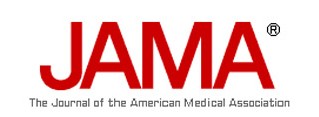



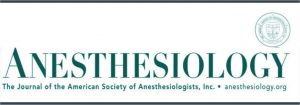

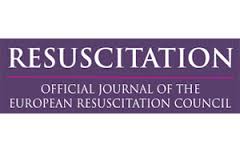


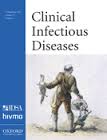

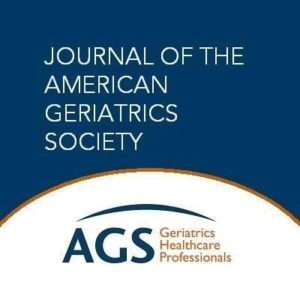
 Étiquettes :
Étiquettes :